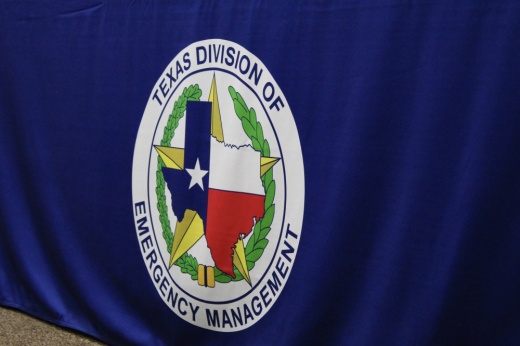“Elected mayors and county judges are the emergency management directors for their communities,” Texas Division of Emergency Management Chief Nim Kidd told a panel of lawmakers. “Our job at the state... is to support local efforts to augment capacity and capability. I always say we are responsible, but we are not in charge—the responsibility of being in charge rests with local officials.”
Kidd was the first official to testify before a committee of 18 Texas House and Senate lawmakers about the historic July 4 weekend flooding, which killed at least 137 people in Central Texas. During the nearly 12-hour hearing, lawmakers considered what needed to be done to protect communities from future disasters.
“Those words are going to ring in my head throughout this: We are better than this,” Rep. Joe Moody, D-El Paso, said July 23. “We've lost a lot in this. It could have been better... before, during and after, and we know that. And that's not a blame game—that's accountability.”
At a glance
State officials, regional leaders and industry experts discussed communications challenges, limited flood warning infrastructure and minimal oversight for local emergency managers during the July 23 hearing. The committee will hold a second hearing July 31 in Kerrville, during which city and county officials are expected to testify.
After lawmakers collect information from officials involved in the flood response, they will hold additional meetings to consider flood-related legislation and hear from the public.
Kidd told the committee that it was difficult for the state to prepare for the July 4 weekend floods, noting that about 12 hours before floodwaters began rising in the Hill Country, weather forecasters anticipated a few inches of rain and had “no indication” of which regions would be most heavily impacted.
He said the state initially sent resources to about 44 Texas counties.
“It was not about the intensity that we saw in the forecast, because we didn't see it—just like you didn't see it, just like no TV meteorologist ever broadcast about it,” Kidd said July 23. “What we saw was a giant swath of Texas—we started calling it a belt—of where something may happen.”
Zooming in
The National Weather Service issued a series of alerts about flooding in Kerr County, including a flood warning after 1 a.m. July 4 and a flash flood emergency declaration around 4 a.m., Community Impact reported. Kidd said that while TDEM staff monitor weather conditions and other emergencies around the clock, that information is not necessarily communicated to leaders in impacted communities.
“Do they make a concerted effort to communicate that, to make sure that the people in that area where that flooding is occurring [know] this is happening?” Sen. José Menéndez, D-San Antonio, asked.
Kidd said there are no procedures in place to ensure local emergency management teams receive weather warnings.
“You do see the problem with that, right?” Menéndez asked.
“Senator, I do,” Kidd replied.
Lawmakers acknowledged July 23 that it was unclear when Kerr County officials became aware of the flooding and began notifying residents, noting that floodwaters rose rapidly.
“We're going from zero to 200 miles an hour in three hours and 17 minutes,” Sen. Paul Bettencourt, R-Houston, said. “So we're really going to have to have an extended discussion with the National Weather Service about these type of alerts and the speed of which they came out.”
Committee co-chair Sen. Charles Perry, R-Lubbock, said July 23 that the NWS would likely meet with committee members behind closed doors within the next two weeks.
In an emergency, only a mayor or county judge can order an evacuation, Kidd said, adding that he did not think state officials should have that ability. Sen. Charles Schwertner, R-Georgetown, said more needed to be done to ensure those local officials are informed enough to issue local warnings or evacuation orders.
“We can have sirens up and down [the river], but if someone doesn't turn them on, they're no good, right?” Schwertner said. “So that communication to the person making the call in this emergency needs to happen. “There seems to be a disconnect in making sure the person making that call is awake, alert and doing it.”
Put in perspective
Kidd also testified that there are “no minimum qualifications” to become a local emergency management coordinator in Texas. Local emergency managers are typically appointed by mayors or county judges, he said.
Emergency management officials in counties with at least 500,000 residents are required to complete a three-hour training course approved by the state, he said, but no such requirement exists for smaller communities.
“There is no standardization or no consistency,” Kidd said. “Today in Texas, a police officer has to pass the TCOLE exam, ... a firefighter has to pass written and practical tests. But to be an emergency manager, you need a signature. That needs to change.”
Local emergency management entities do not have an incentive to work together or coordinate with the state, Kidd said, telling lawmakers that “there’s no funding, there’s no carrot, no stick.” He said this can lead to conflicting information being spread as a disaster unfolds.
“We have a long way to go on improving our communications,” Kidd said.
He said TDEM also has limited discretionary funding, noting that about 70% of the agency’s budget comes from the federal government and is allocated for a specific purpose, such as recovering from a past disaster.
“I would love to have conversations about how we hire people whose sole purpose is to support our local government partners... in their corrective action plans,” Kidd said. “If you go find any of our first responders and ask them... if they’ve implemented a [corrective action plan], most of them are going to tell you, ‘We don't know.’ That's why we keep having these failures of the same thing over and over again.”
Digging in deeper
Lawmakers also criticized the Upper Guadalupe River Authority, which is in charge of a roughly 38-mile stretch of the Guadalupe River in Kerr County, for neither raising local property taxes nor accepting a zero-interest loan from the state to fund a $1 million flood warning system.
According to testimony from the Texas Water Development Board, the UGRA requested state funding to help with the project in April 2024. The TWDB offered a $50,000 grant and a $950,000 loan with 0% interest, but the river authority declined the loan in October.
UGRA general manager Tara Bushnoe told lawmakers July 23 that the river authority has an annual operating budget of $2.3 million and does not currently have any flood warning sirens. She said the UGRA’s board members decided the grant funding was not enough to move forward with the project, which Schwertner said he found “extremely disturbing.”
“I’d like to talk to your board,” Schwertner said. “I hope they're there in Kerrville to answer to the actual people of that region, the residents and their neighbors.”
Bettencourt said he thought the upgrades, which would have included flood gauges at 10 low-water crossings throughout Kerr County, would have been “perfectly suited to the problem that occurred on July 4.”
“I can't even begin to estimate the [lives] those 10 gauges and those warning systems would have saved if they had been online on that day,” Bettencourt said.
Legislative approach
Lawmakers have suggested that the state should fund early warning sirens and other flood infrastructure for flood-prone regions, including communities along the Guadalupe River. They could do so during the current special legislative session, which began July 21 and will last for up to 30 days.
Committee co-chair Rep. Ken King, R-Canadian, said July 23 that he intended to file legislation to develop new state emergency alert systems and provide funding to help local governments gain early warning infrastructure. He authored a similar bill during the regular legislative session, but it did not gain traction in the Senate.
King noted that if his proposal had passed, it would not have become law until Sept. 1, after the July 4 floods.





